A herd of ten Sorraia horses arrived at Vale Carapito last weekend. The first step to recover the importance that these large herbivores have in the management and modelling of the landscape. This native breed counts on only about two hundred individuals worldwide.
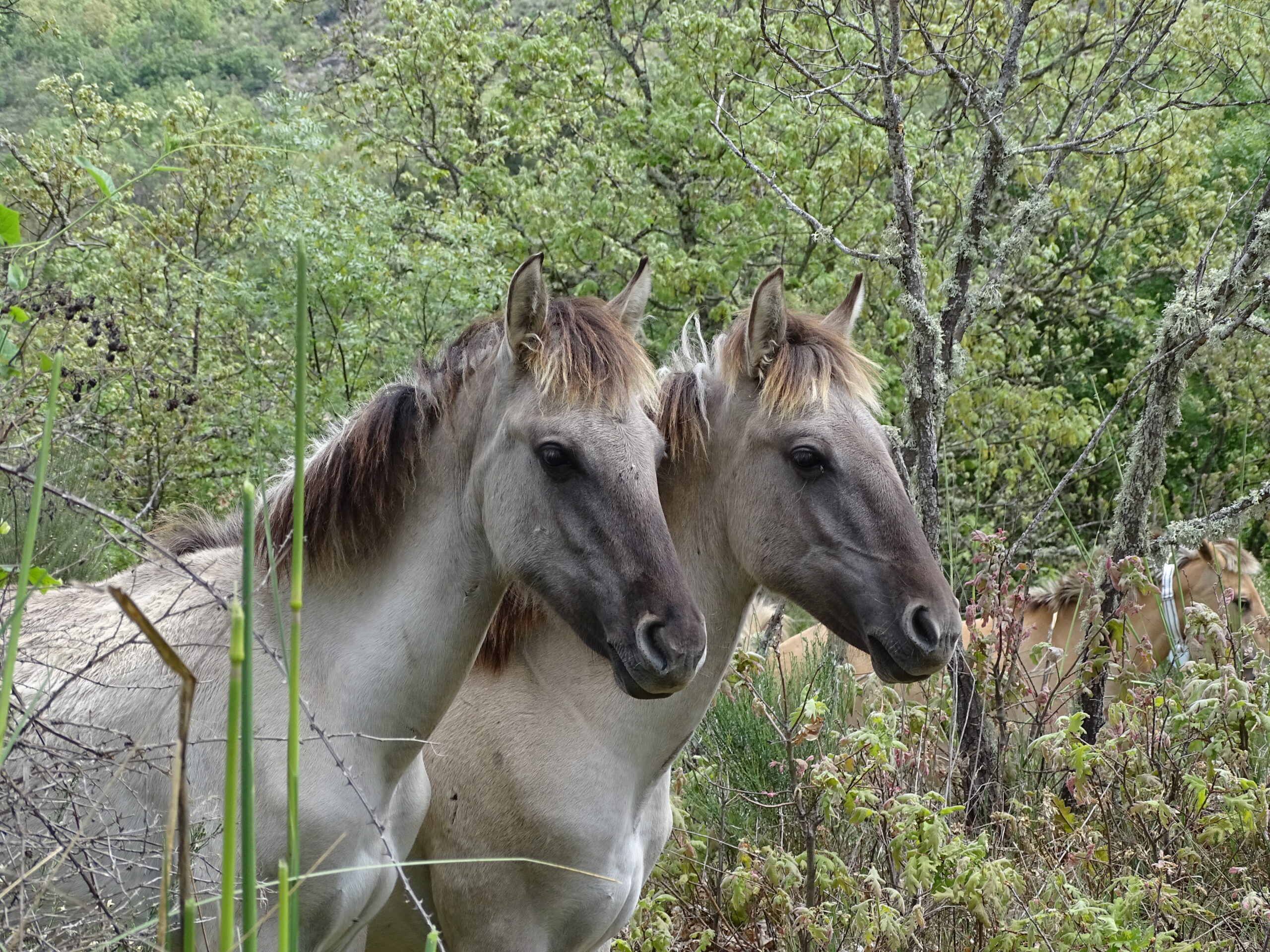
An important milestone for rewilding in the Greater Côa Valley
Last Saturday, May 1st, was an important moment for the conservation and rewilding efforts carried out by Rewilding Portugal and partners, in Portugal. Vale Carapito, located in Vilar Maior (Sabugal municipality) and owned by Rewilding Portugal, received its first large herbivores, a herd of native Sorraia horses,. This herd of ten animals will live in a semi-wild state and will play a key role in transforming the landscape. The impact of these animals will be studied to demonstrate the results of the nature conservation rewilding approach.
To mark this moment, a horse release ceremony was held on the property, which, in compliance with all public health guidelines, counted on quite a few participants who did not want to miss the opportunity to see the release of these animals into their natural habitat, and the first moment of their new life in a semi-wild state. It was also a great moment for the local community, who could see the new dynamics that rewilding is bringing to the region and to their village. The event started with short speeches by Pedro Prata, team leader at Rewilding Portugal, as well as the president of the Union of Parishes of Aldeia da Ribeira, Vilar Maior and Badamalos, António Cunha, and also the vice-president of the Municipality of Sabugal, Vítor Proença.
Pedro Prata, noted the occasion, referring that “large herbivores are fundamental in the management of ecosystems and the promotion of biodiversity. Today we mark an important milestone for the Rewilding Portugal team, which is to be congratulated for their excellent work on this project”. For the union of parishes, this moment “brought a new life to the territory, making the region more dynamic and attracting people”. Vítor Proença also emphasized the importance of initiatives like this, referring that these “value even more the incredible natural heritage that the municipality of Sabugal has at its disposal, especially in the area of Vilar Maior”.
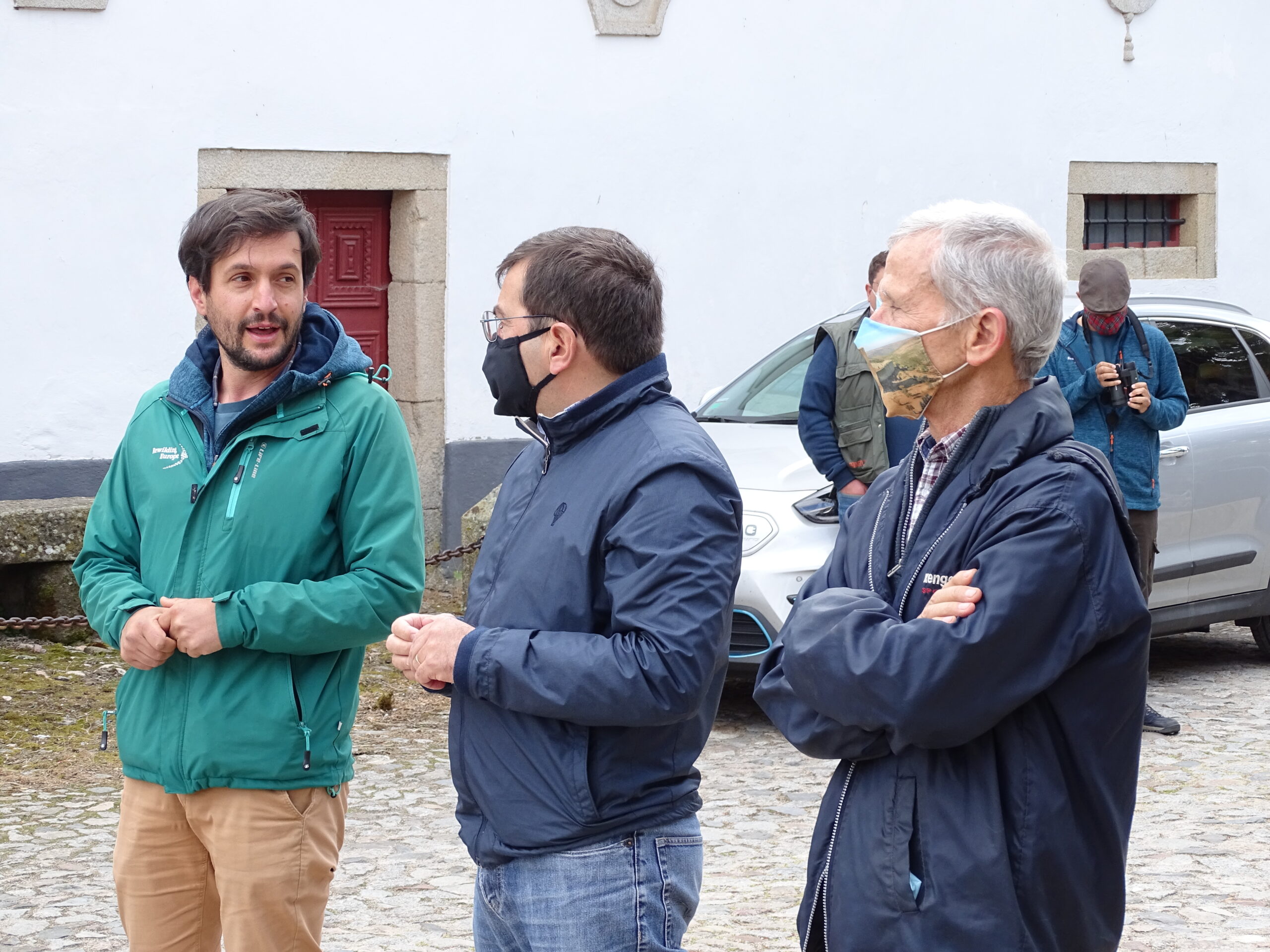
The Sorraia horses spent the night confined and were released on Saturday in Vale Carapito, ready to fulfil their role as large herbivores. At a rhythmic throt, they passed around the group of people present and went on their way. A sign of hope for nature in Portugal and further proof that there is a new way for its conservation through a rewilding approach.
You can see the video of this moment here:
The Sorraia horse and its function
The Sorraia horse, a native Portuguese breed, has a population of only about 200 individuals worldwide. For the same reason, the choice of this herd for Vale Carapito consists in an effort and contribution to the preservation of the breed. The horses came from the Sorraia Horse Natural Reserve, located in Alpiarça, an important centre for the conservation of this breed.
Considered to be reminiscent of the wild ancestor of the Iberian horse, the Sorraia Horse has this name because it was recovered from an areas found in the valley of the River Sorraia, in Coruche. They are horses of small stature (1.44 to 1.48 m on average), with a coat of light brown or dun, primitive markings such as a black dorsal stripe and horizontal striping on the legs. . In the case of the herd now living in Vale Carapito, there are eight females and two males, five of whom are already adults, while the rest are foals or juveniles. They are also different in their coats, as two of them are light brown, while the rest are dun-coloured.
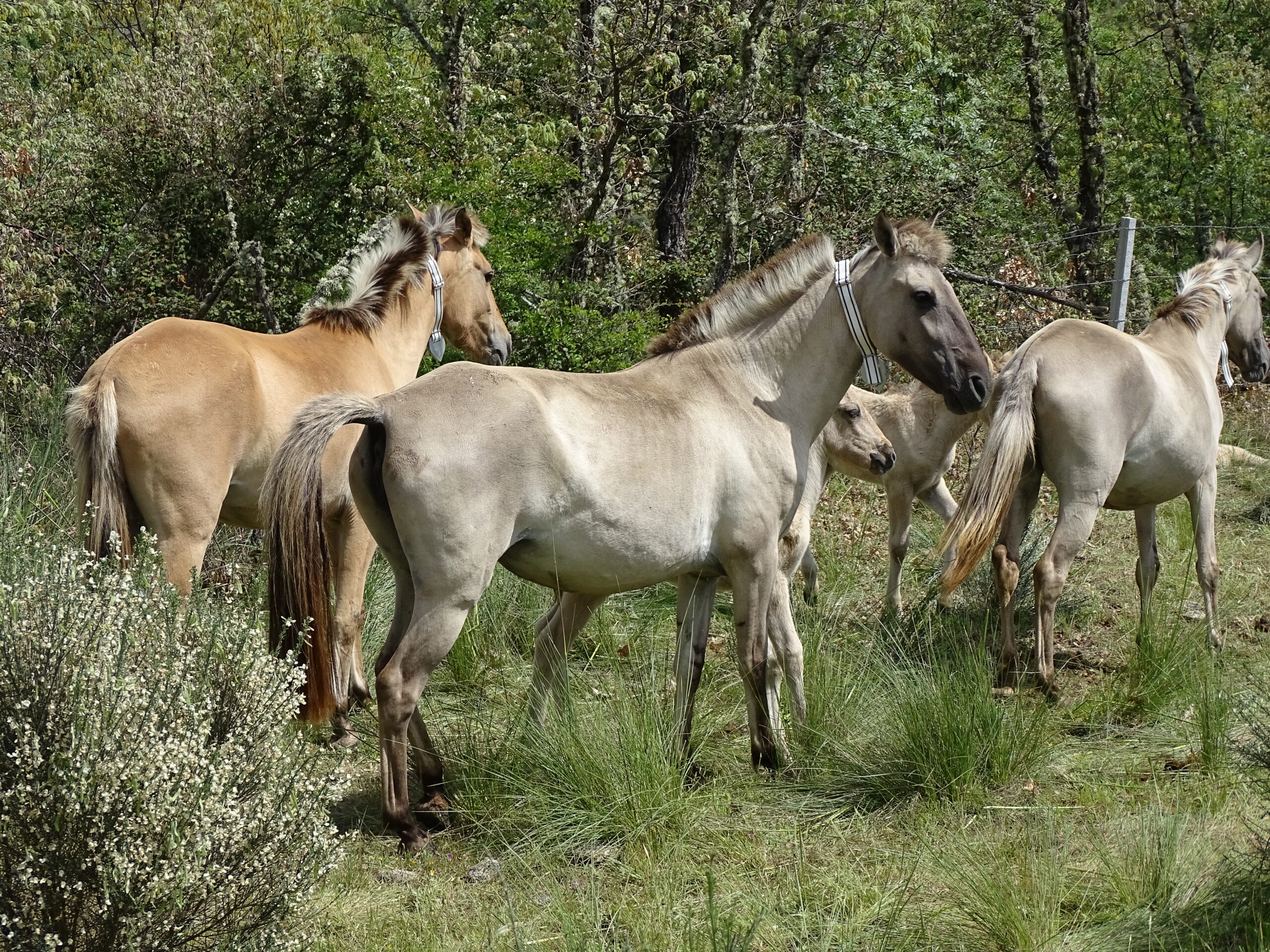
Sorraias are wild horses extremely resistant to environmental conditions, something that they inherited from their primitive ancestors. As large herbivores, they have a fundamental role, since they help to shape the forest, maintaining pastures and open areas through natural grazing. They are also great allies to reduce the risk of forest and rural fires, one of the biggest threats in Portugal that has worsened in recent years.
The current goal is to continue to use this species and its semi-wild functions as a large herbivore, as they have an enormous importance in the consumption and management of biomass, creating new mosaics in the vegetation.
Vale Carapito, new rewilding area
Vale Carapito, a property acquired by Rewilding Portugal to carry out conservation actions that reinforce the ecological corridor of the Greater Côa Valley, is the new area of practical application of rewilding in Portugal. Located near Vilar Maior, it promises to be the new showcase of the benefits that rewilding has for nature and what results it can achieve when increased at larger scales. In addition to the rewilding of the landscape and ecosystems, it will also have an important function of sustainable and nature-based tourism, with the aim of being a true showcase for the application of rewilding and its effects.
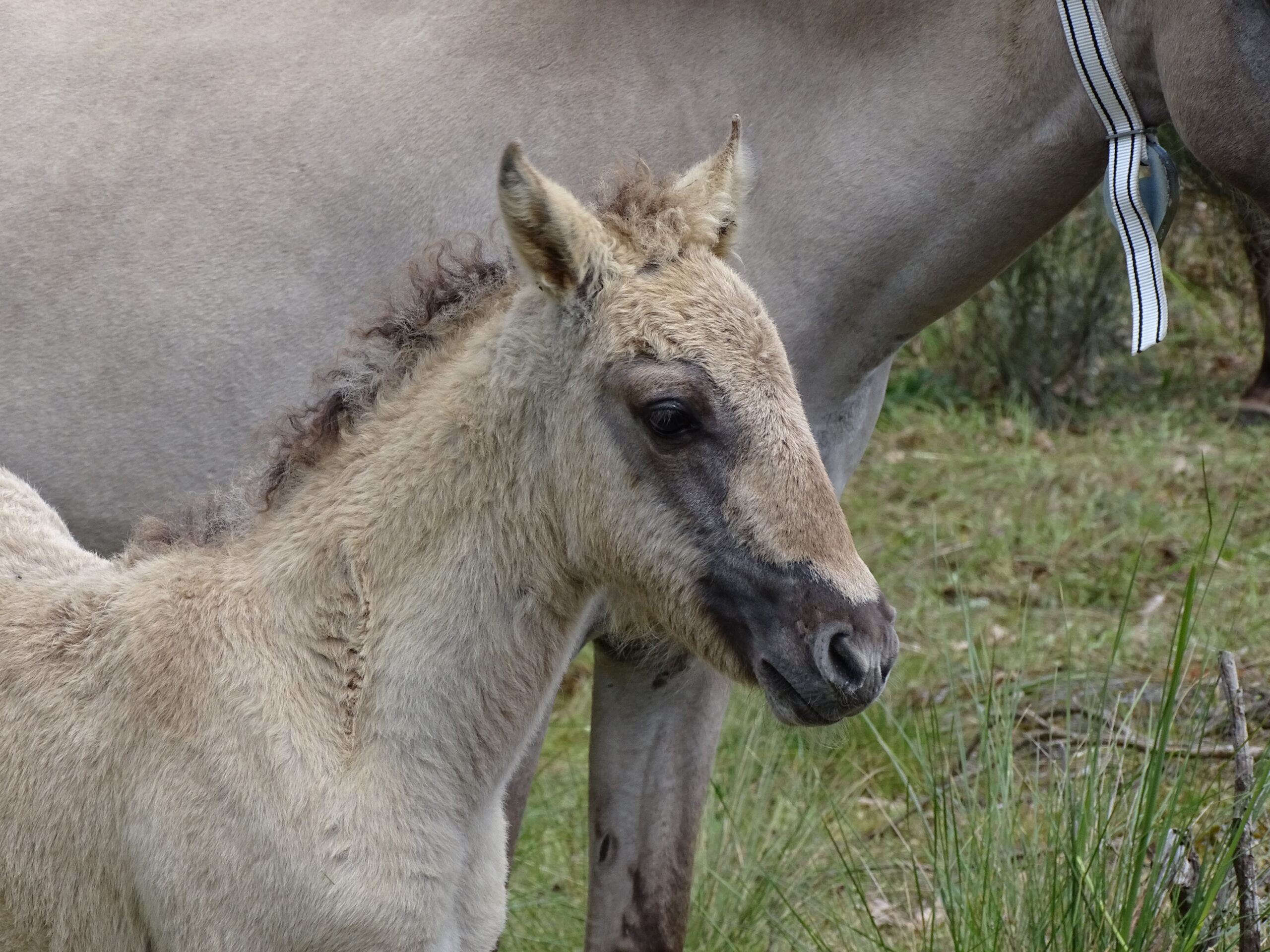
Another very positive point to highlight has been the adhesion of the local community, namely the official entities of the village, which have supported Rewilding Portugal and their partners in all the actions of their projects when necessary, showing a willingness to help in this mission of making this region of Portugal in a wilder and more natural place, and to attract quality and sustainable nature-based tourism, making the region stand out for the best reasons to become a regular choice of visitors. Through actions to promote the territory and its added value, in a context that respects the nature conservation to be carried out in this place, developed by Rewilding Portugal, there are very interesting possibilities for Vale Carapito to actively contribute to enhance this territory, supporting the local economic and social fabric.
Several conservation actions have already taken place in recent months, namely the monitoring of flora and fauna, to study the plant and animal biodiversity of the property, as well as the landscape and soil, some of them with the support of Terra Prima. The purpose of these monitoring actions is to know the territory in which we are working and to be able to compare current levels with the levels after applying rewilding measures (passive or active management in specific cases). Actions to promote natural grazing are also planned, through the use of herbivores in a semi-wild state; actions to remove obsolete structures, which act as barriers to the region’s wildlife; control actions for invasive species; active fuel management actions and territory surveillance actions.
According to Pedro Prata, Team Leader at Rewilding Portugal, “This work in Vilar Maior is the first concrete step in the field of a connectivity strategy for the ecological corridor of the Greater Côa Valley. Our work here will allow us to refine the strategy of rewilding at the level of the landscape.”
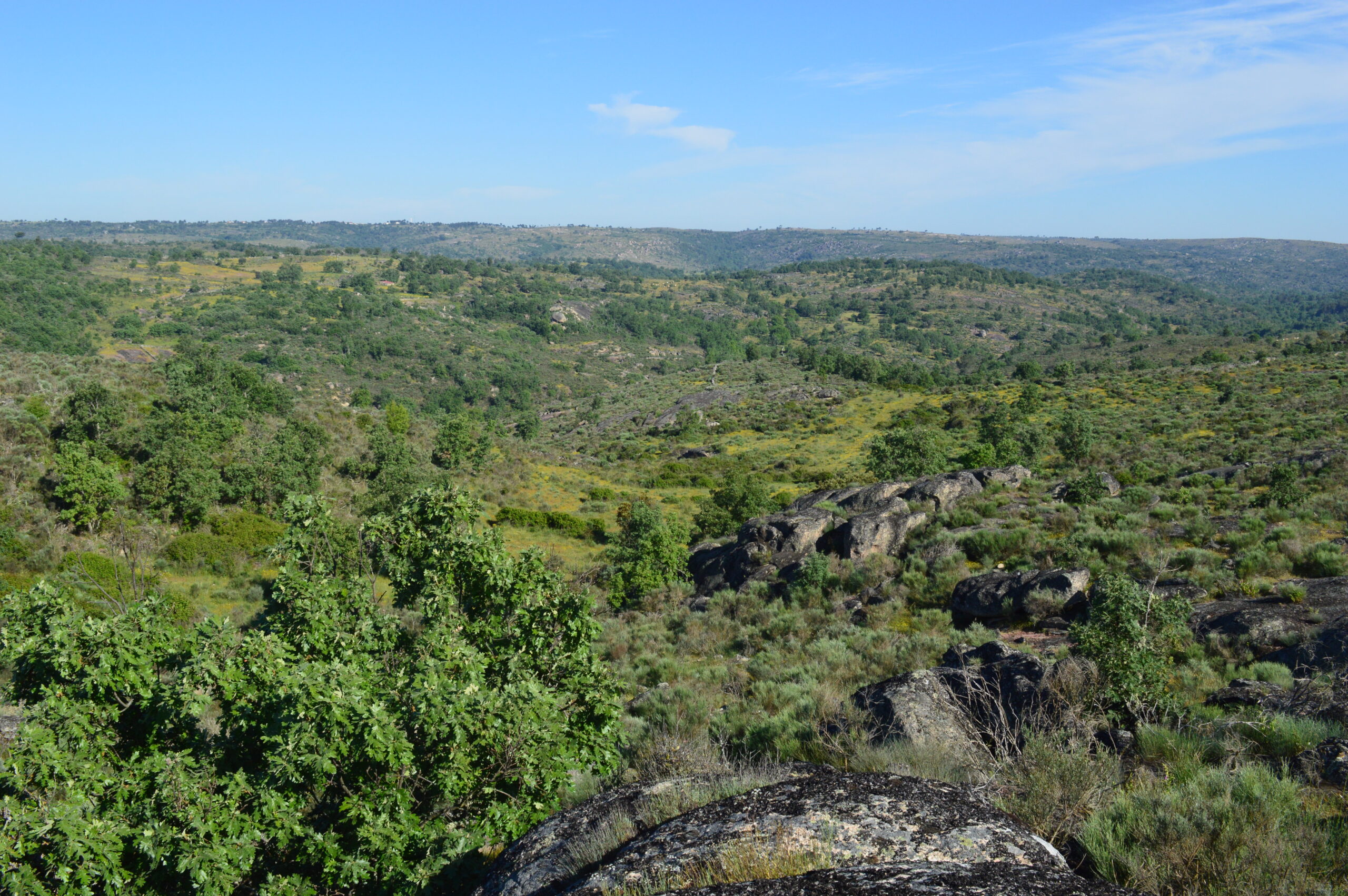
About our projects
The Scaling Up Rewilding of the Greater Côa Valley project is funded by the Endangered Landscapes Programme, which is managed by the Cambridge Conservation Initiative and funded by Arcadia, a charity fund by Peter Baldwin and Lisbet Rausing.
This project is carried out in partnership by Rewilding Portugal, Rewilding Europe, ATNatureza, University of Aveiro and Zoo Logical.